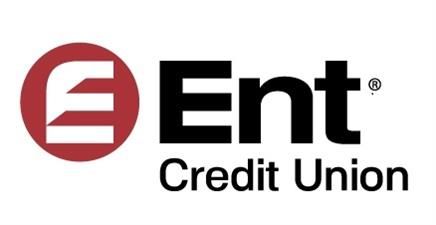Interest rates, inflation cause uncertainty for banks

Rising interest rates, inflation and a shortage of workers are just some of the challenges facing banks currently, although net interest margins continue to hold steady at an average 3.06% for insured institutions in the state as of June 30, 2022, which is a slight drop from 3.09% on June 30, 2021.
Net interest margin, which is the biggest driver of profitability and revenue for banks, will eventually tighten up, probably sometime next year, said Gerard Nalezny, president of Verus Bank of Commerce.
He suspects that banking net interest margins, which remained solid in the third quarter, will level off in Q4 and dip down and then rebound during the first quarter of 2023.
SPONSORED CONTENT
“That’s a function of deposit rates moving up, compressing, and loan rates going up to compensate. There’s always a little lag in stuff,” he said.

“We’re in a rising rate environment, and it looks like that will continue for a while as the Fed works to get inflation under control. We will continue to see that for a bit,” said Jennifer Waller, CEO of the Colorado Bankers Association. “On the positive side, banks went into the pandemic very strong in 2020, savings rates were very high for the businesses we serve, banks capital ratios were very strong and continued to be strong throughout the pandemic.”
Early on, there was an expectation that the industry would see a decline in credit quality, Waller said, “but that hasn’t happened yet. Inflation eventually does impact that if inflation continues at the rate we’ve seen it.”
When it comes to the rising rate environment the country is seeing right now, “banks are required to test for that situation,” she said. “They are required to structure their securities portfolio in a manner that can handle a rising rate and falling rate environment to make sure impacts to banks will be minimal. I’m not concerned with the quality of institutions. They are structured to withstand fluctuations of the market.”
Nalezny said there is probably as much uncertainty now as he’s seen in his entire banking career. “It is a lot of cross currents, a lot of moving parts.”
On the deposit side, interest rates, for the most part, have yet to move significantly, he said, and that’s largely a function of the fact that there is so much liquidity in the system. “Because of that, banks are not yet being forced to pay up on deposits. That will change. There’s a lag there. Eventually, you will see banks forced to pay up on deposits.”
He added that the loan-to-deposit ratio is still at historically low levels and he isn’t sure when that will change, possibly sometime next year.
In terms of loan rates, residential mortgage rates have moved up substantially and quickly, Nalezny said, but for large institutional lending, Verus Bank isn’t seeing that because his bank focuses more on middle-market lending, which isn’t moving up as quickly.
Even with growing concerns about a recession, Nalezny said he isn’t seeing those indicators in the locations and industries his bank serves. “I don’t see a lot of credit weakness in Northern Colorado. Verus Bank continues to be at historic lows as it relates to any credit indications, with lows being a good thing.”
He added that Verus doesn’t have any loans that are 30 days or even 10 days past due currently.

“I look at the Colorado landscape, and I’m not seeing a lot of weakness. That said, even looking at Colorado as a strong place, it depends on where you are,” Nalezny said.
Work from home has changed the office landscape, which is a “much bigger deal in a big metro market like Denver than in Fort Collins, Loveland, Windsor or Wellington. We haven’t had a new office built for years because the cost of building didn’t justify the cost of rents that would be received,” he added.
Shawn Osthoff, president of Bank of Colorado, which is the fifth- largest banking institution in Northern Colorado, said “it is a very challenging environment.” With fixed rates for three to five years, it “naturally creates a squeeze on net interest margin. A rising rate environment is better for banks but is a challenge in this environment in addition to inflation.”

For Bank of Colorado, business and loans continue to be strong, Osthoff said, but in housing, the 30-year rate is at or above 7% in most cases, which is a “little bit of a sticker shock for people looking to buy a home. People who would still like to buy a home are sitting on the sidelines to see what happens for a bit. There is a strong demand for housing and I don’t think there is oversupply. It will be interesting to see what happens over the next several months,” he said.
Banks are also challenged with filling positions. “The employee shortage is impacting us as much as any entity in the state. That is starting to ease up again. If we are on the cusp of recession, that will level out,” Waller said. Usually, there is an influx of people wanting to work in a recession environment, she added, so that situation will “probably resolve itself in the next 12 months I would assume.”
As a smaller bank in the area, Verus Bank can afford to be more nimble, Nalezny said. During the last recession, his bank gave a loan to a car dealership when nobody else would because “we knew the players and we knew the situation. We can make micro decisions. You can’t do that with a national player. They are not going to do car loans or restaurant loans.”
Verus Bank is still seeing customers borrow money even with looming recession fears.
“We have good economic growth in Colorado, and people are still growing and investing and trying to fill demand,” he said.
Waller added that the banking industry is “so closely tied to the economy, it does impact us. With a high level of capital and strong reserves, we are somewhat insulated because of the mechanisms we have in place, but every banker I know is following the economy and inflation closely. If it impacts customers, eventually it impacts us.”
Rising interest rates, inflation and a shortage of workers are just some of the challenges facing banks currently, although net interest margins continue to hold steady at an average 3.06% for insured institutions in the state as of June 30, 2022, which is a slight drop from 3.09% on June 30, 2021.
Net interest margin, which is the biggest driver of profitability and revenue for banks, will eventually tighten up, probably sometime next year, said Gerard Nalezny, president of Verus Bank of Commerce.
He suspects that banking net interest margins, which remained solid in the third quarter, will level off in…
THIS ARTICLE IS FOR SUBSCRIBERS ONLY
Continue reading for less than $3 per week!
Get a month of award-winning local business news, trends and insights
Access award-winning content today!




